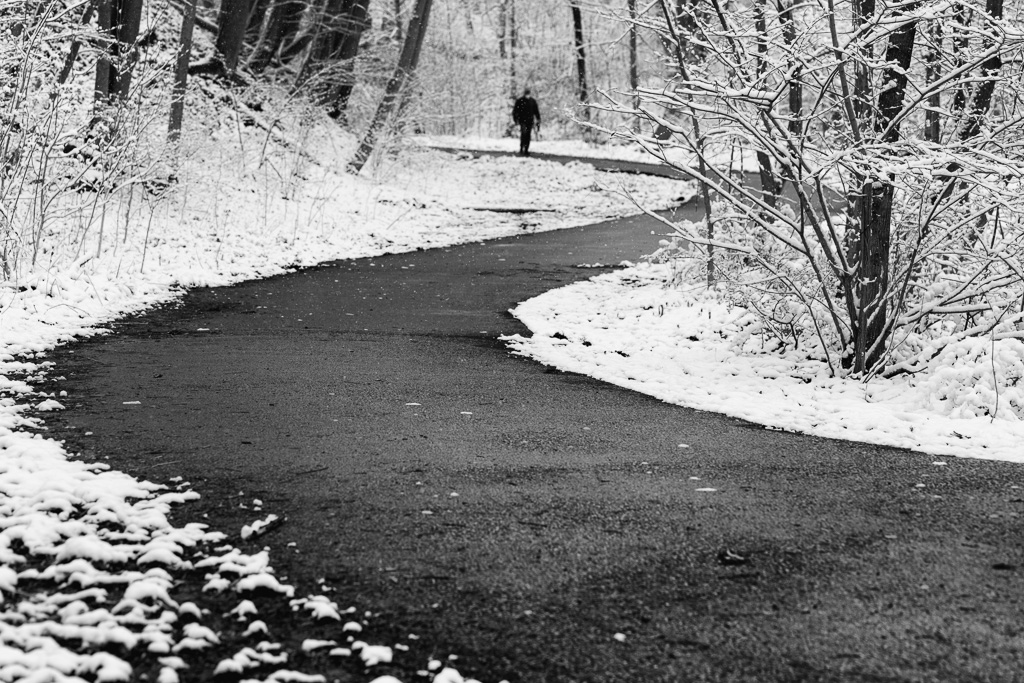Last night, or early in the morning, it started to snow. Because the temperature never got down to freezing, it was that sloppy fat snow that clings to trees and is conducive to wonderful high-contrast landscape photos. So, after breakfast, I went out for a wander through Yellow Creek. Where on Sunday—which was sunny and warm—the ravine was crowded, this morning it was largely empty. A handful of dog walkers and a homeless woman. It’s been months since I last meandered with a camera. Yes, I’ve gone out with a camera, but incidental to some other purpose. I haven’t gone out solely for the sake of wandering with a camera. I need to be more deliberate in my lack of deliberateness.
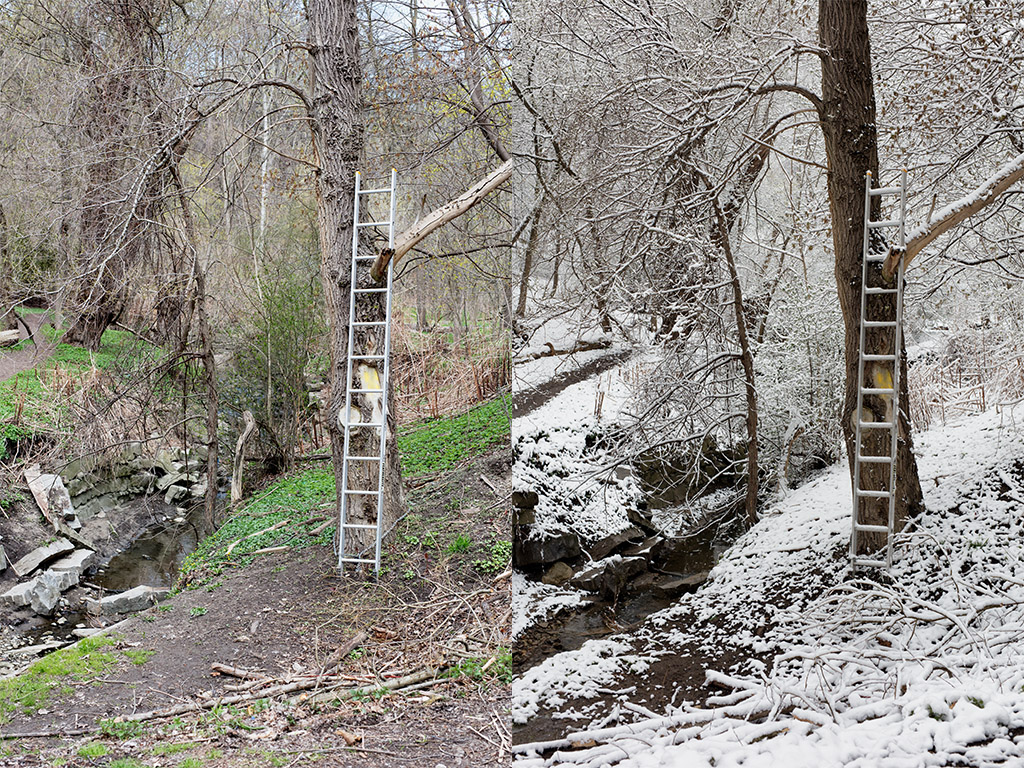
To illustrate the radical shift in the weather, I started with some shots that mirror shots I made on Sunday. A before and after of a ladder leaning against a tree. In itself, a ladder in a forest presents a puzzle. Who would bring a ladder into a forest and, more to the point, who would leave it there? It looks like a perfectly good aluminum ladder. Why not take it with you when you’re done whatever it is that prompted you to bring it into the forest in the first place? But, like many of life’s great mysteries, questions of human behaviour often elude me.
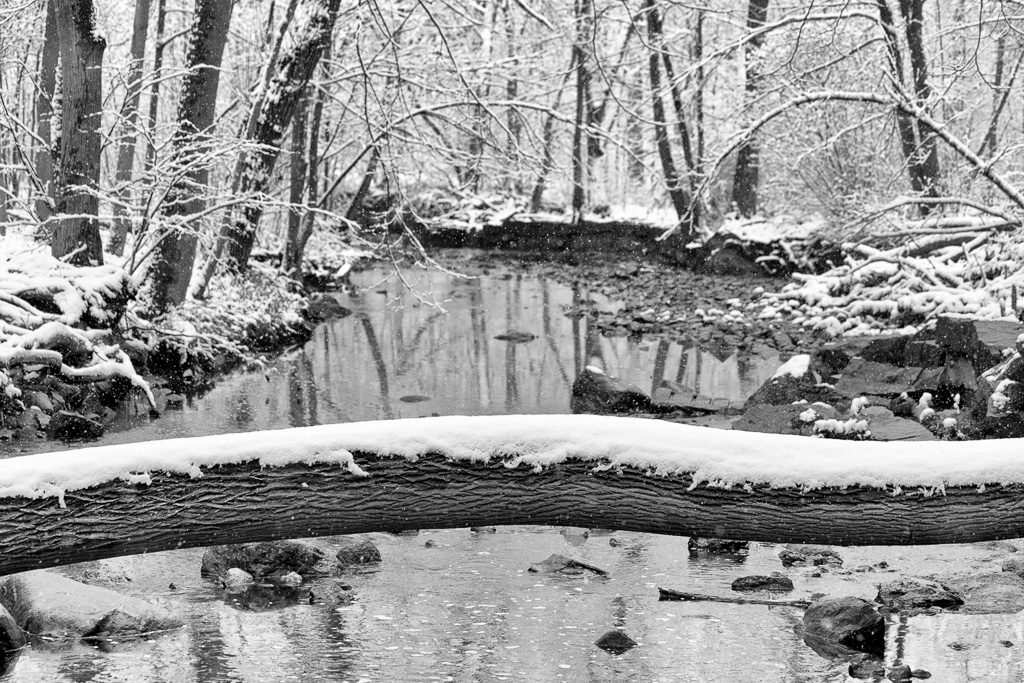
There are two trees I routinely visit when I walk through Yellow Creek. I have read articles that say a walk in the woods, surrounded by trees, can be restorative. Since the pandemic began, the frequency of such articles has increased in response to the fact that, more than a year in, the prevalence of mental health issues has risen dramatically. People in Toronto are fortunate because the city has grown up over a network of ravines that provide easy escape from the usual urban traumas of concrete and vertigo. So, for the sake of my personal mental health, I pay a visit to a couple old friends, the sort of friends who don’t need masks and will never infect me with anything. When I first met them, they lived a precarious life by the water’s edge as the ground around them slowly washed downstream. Last autumn, one of them fell over and now spans the creek while its companion looks on, waiting its turn.
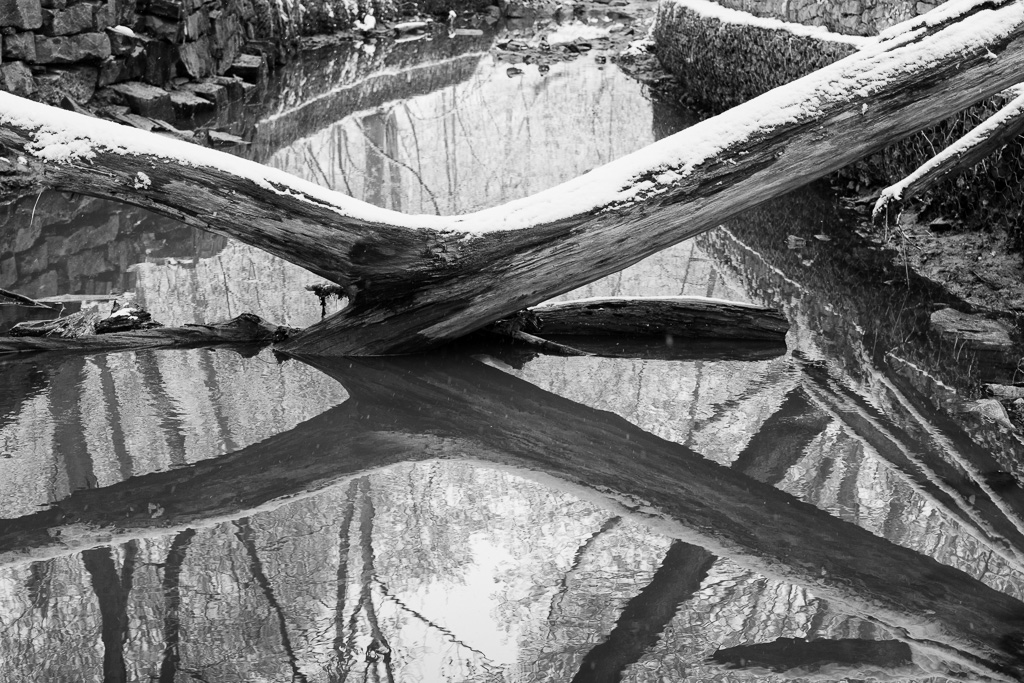
After my visit, I walk up to the wonderfully named Vale of Avoca where the city has restored the large concrete drainage pipe beneath the St. Clair Avenue East bridge. For years, the pipe lay in sections scattered in the creek bed. Now, the site has been spiffied up. Hopefully, new growth will take hold and repair the damage caused when they clear-cut a path to bring heavy equipment down into the ravine. The powers that be have placed a sign under the bridge—Toronto Region Ravine Erosion Mitigation Project—beside a heap of mud and detritus that used to be a resident’s back yard before it sheared away from the side of the house and slid down into the ravine.
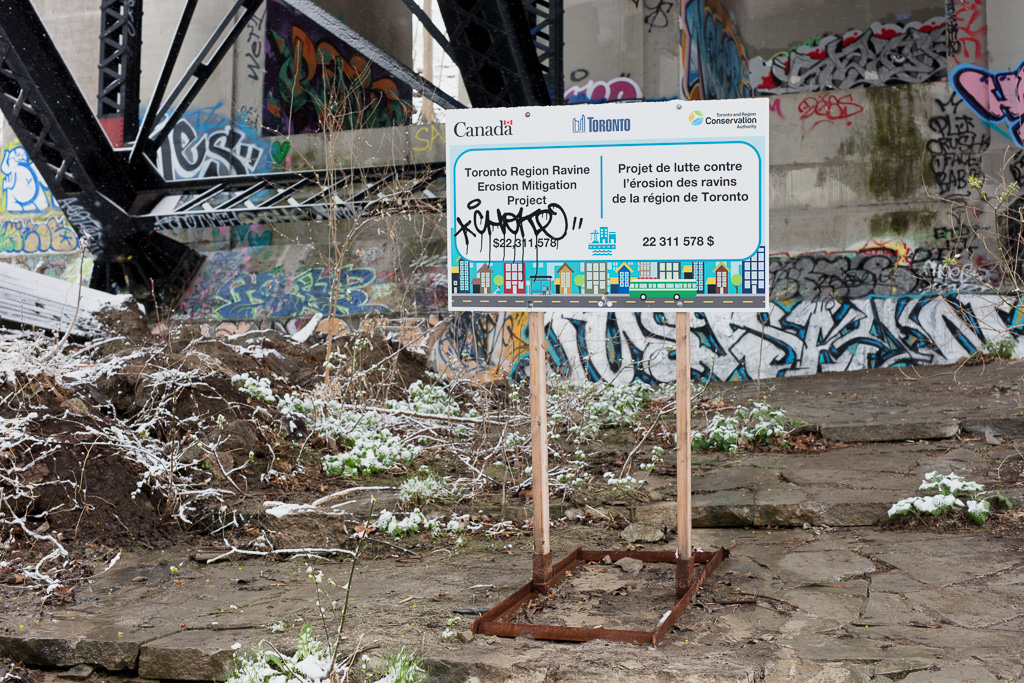
One level of government is conspicuously absent from the sign. In so many ways, Doug Ford’s conservatives nickel and dime Toronto every chance they get. It’s a childish game of punishing constituencies that haven’t voted for him. It’s a pointless game, too. The federal government picks up the slack and deducts its contributions to the city from its transfer payments to the province. I shake my head. I mean, JFC, why would you want to undermine a place that Richard Florida points out is on the cusp of becoming one of the world’s great global cities. Toronto already accounts for 20% of Canada’s GDP. This figure is more than half of Ontario’s contribution (38.5%). By what logic does Doug Ford think it’s a sound policy to starve his cash cow?
I feel inclined to fume. I want to yell. There’s wonderful echo under the bridge. But I pause and take a deep breath. This walk was for the sake of my mental health. I turn back the way I came. I pass my two friends and tell them I hope to see them soon. The snow has stopped. The sky is growing lighter as if the sun might burst through the clouds. It’s going to be a good day.

